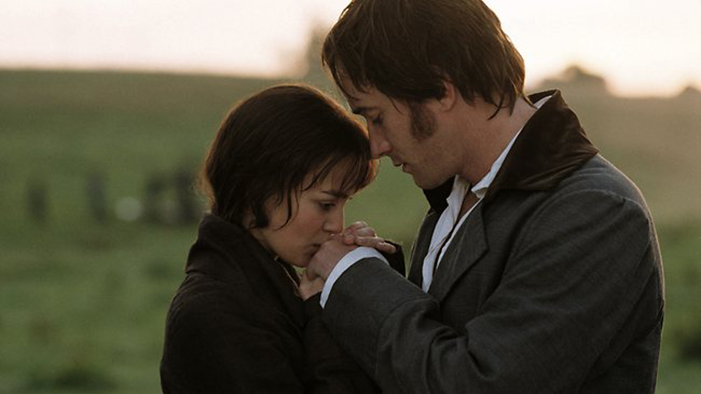Summary
The First half of France’s 10th century was one of unstoppable decline into feudal localization of power and further enervation of Carolingian power under the Viking onslaught. At the death of the last Carolingian king in the west, West Frankish nobles and religious leaders chose as king Hugh Capet, a strong noble from Ile de France surrounding Paris. The motivation was to elect as king someone who was not strong enough to prevent further feudal aggrandizement on the part to the Dukes. The major accomplishment of Hugh were:
1. To have his son crowned as associate in kingship, guaranteeing continuity of the Capets as monarchs
2. To succeed in continued rule of his own Ile de France duchy and the loyalty of lesser feudal lords in the region
3. To maintain the Church’s support of his house’s rule
Beyond that, his authority was constrained quite severely. Counts enforced his decrees only as they saw fit, and manorial dues on his lands came to him only through his continued enforcement. Though his vassals included al duchies west of Lorraine to Spain, he was seen as only one more—anointed—duke, and beyond his inviolable status as king, was little able to enforce his prerogatives. His successors included Robert the Pious (996-1031) and Henry I (1031-1060), but they possessed absolutely no supremacy in France. Indeed, these were not able to preserve Hugh's power even within the Ile de France. Their greater vassals here built motte and bailey castles as well as stronger fortresses, defying their lords’ commands as long as they had the muscle to do so. At this time the king of France needed to obtain permission from other dukes to pass between duchies. Offices such as the provost meant to monitor and collect dues from royal domains throughout France were bought according to highest bids, after which they became hereditary and seeped away from the crowns control.
The tide of unsalvageable feudalization defying royal authority only began to slow under Philip I (1060-1108). He was able to stop the shrinkage of the desmene, and added a few lands to the crown, such as Bourges (purchased from its viscount so the latter could go on Crusade), as well as a small amount of Angevin lands in return for recognizing a count of Anjou. Beyond this however, the stabilization of feudal duchies and counties afforded the crown little room for politicking, just as his neighbors were all at least as strong as he, preventing expansion. It was often difficult to control even his own vassals in Ile de France.
Philip I had grown weak and lethargic in his old age. His son Louis VI (r. 1108-1137) was much more aggressive. He had a multiform program.
The enforcement of obedience among his own duchy’s vassals. He would often summon lords to his court to hear claims of their abuse. If condemned they would revolt immediately upon return their lands. Louis would then march on them with his forces as well as with church forces, since he was able to count on the Church excommunicating the offensive baron. Though defeated at times or abandoned in the field, Louis was successful enough to enforce his authority. After tearing down castles of powerful adversaries such as Hugh de Puiset and Thomas de Martley, others of his vassals became increasingly loyal, providing Louis' heirs with civil and military officers. The extension of royal influence into the duchies of counts supposedly subordinate to him. This was often the result of the king 'meddling' in affairs his predecessors had not been able or willing to. He intervened when the count of Clermont was attacking that city's bishop, and earned the former's homage (in addition to increased clerical support). Upon the murder of Flanders’s count, Louis occupied the region.
In 1124 his vigor here had paid off. When Henry V of Germany planned an invasion, Louis successfully summoned forces from all of the Northern duchies, persuading Henry to call off the attack. Around this time Aquitane too allied with him. The crown’s administration was entrusted to the Abbot Suger from the St. Denis monastery. When all of the civil offices of the royal crown were entrusted to him in 1125, he was able to increase their literacy and efficiency, at the same time as lessening old household offices dominated by Ile de France's nobility. The protection of the Church and its programs was important to Louis. For pious as well as realpolitik reasons, several French nobles and warriors were encouraged to Crusade, and patronage was given to several monasteries, thereby increasing loyalty to the crown. Also, contacts were made with Bernard of Clairvaux, aiding monastic revival in France.
Louis was succeeded by his son Louis VII (1137-1180), who continued the policy of increasing the crown’s reach through defense of the Church. In 1144-1145 the king went on the Second Crusade, with Abbot Suger administering crown lands in his absence. Soon after, the long entanglement between Capetian and Angevin/Norman ambitions in France began. Louis VII had been married to Eleanor of Aquitane, ostensibly enlarging the royal domains. The two did not at all get along, though, and Eleanor was not able to bear the king a male heir. The marriage was thus annulled in 1152. By the next year she was married to Henry, Duke of Normandy and Anjou, and soon to be king of England after Stephen’s death in 1154, based upon prior agreement. Henry’s lands thus increased greatly to include Anjou, Normandy, Aquitane, as well as England, and Louis VI needed allies.
In 1164 he married Adele of Blois, while his daughters (by Eleanor) married the counts of Champagne and Blois. While an alliance was created to head off Henry, the Capetian monarchy came under increasing Blois domination. One of Louis VII’s sons, Philip, wanted to break the Blois-Champagne hold over his father, and thus cultivated Flanders-Alsace support through marriage. He also acquired support from England's Henry II, such that by 1180, he took power from both the Blois and his father.
The four decades of Philip II Augustus’s rule (1180-1223) saw the emergence of a unitary, somewhat self-conscious France. Almost the entirety of his era was occupied with intrigue or battle against the Angevin Empire. Philip's hope was to manipulate Henry II’s sons. He was close to the older two, but their 1180 death removed the potential for control over some Angevin lands. The two remaining Plantagenet sons were Richard and John. Henry II made Richard the chief inheritor, delegating Aquitane to John. At this point, Philip Augustus supported Richard in a small uprising to convince Henry to give him Aquitane as well. Philip thus hoped to increase the chances for Plantagenet civil war in the future. However, Henry died in 1189 shortly after the hostilities, leaving the whole Angevin realm to his son Richard. Philip had miscalculated—passing all of the lands as an indissoluble unit strengthened the Angevin Empire's realness, and Richard was no ordinary king. He was Richard the Lionheart, with great power and charisma, and he was able to frustrate Philip Augustus for a decade until 1199.
In 1189 Richard decided to join the Third Crusade launched in response to Salah al-Din al-Ayyubi's conquest of Jerusalem. He raised the necessary funds by selling several of the offices of Henry II's expanded bureaucracy. In 1190, he proceeded east from France, with Philip Augustus unenthusiastically accompanying the host. Richard was able to capture Acre, after which the French king returned home. Richard then became concerned that Philip would make a claim on his continental lands through collusion with his younger brother John, and so decided to return to England. Along the way, he was discovered in the lands of his foe the Duke of Austria and taken prisoner in 1193. He was soon handed over to the German Emperor Henry VI who disliked Richard greatly and was inclined to hand him over to Philip. At this point, however, the efficient English royal administration from Henry II’s days came to the King's rescue, and was able to acquire the funds to bribe Germany’s princes into demanding Richard’s release. The bribery worked, and Richard returned to England at the end of 1193. At this point, Philip Augustus repudiated Ingeborg, his Danish wife and daughter of Danish king Canute, whom Augustus had hoped to win over to an anti-British alliance.
Richard had gotten a political education, and spent the next five years punishing Philip through battle. Plantagenet power was totally restored in France, and Richard was able to win back several border castles, cajoling Philip into a peace. Richard then died from tetanus contracted during a hunting accident in 1199. This was a masterful stroke of luck for Philip, as Richard’s successor John was quite inferior a soldier and politician. Philip had already been expanding his domains northwards towards Flanders, through alliances, bribery, as well as conquest. He acquired Amiens and Montdidier (1185), Peronne (1192), and continued, taking Valois and St. Quentin in 1213. In combat directly against John, Philip wrested all of Normandy by 1204, then advanced to capture Anjou, Maine, and Brittany, increasing his wealth and manpower in each campaign.
Philip was extremely interested in the wealthy region of Flanders. He cultivated relations with the rising northern French towns, granting them charters as communes in return for tax revenues and armed contingents he then used to discipline French feudal lords in cooperation with John. By 1205, Tournai and Poitou had been added to Philip's control, yet John did not admit defeat. He took the next nine years to build up an anti-Philip alliance. It included his nephew the German anti-Emperor Otto IV (1208-1215), Rhine Valley princes, and any French vassal that he could buy off, such as the Count of Flanders, who resented Philip’s encroachments.
The idea was for forces to converge on Philip from different directions. The southern attack was a failure, as it was lead by John. The great engagement was near Tournai, at Bouvines, in 1214. Philip Augustus defeated Otto and the Flanders Count. It was a decisive victory:
1. Otto was so weakened that he lost his crown shortly thereafter to Frederick II.
2. Flanders was resolutely in the crown’s hands.
3. The English lost all French possessions except for the Aquitane coast, Gascony, and Guienne.
4. John’s defeat was so complete that it precipitated a revolt against him back home in England.
In order to pay for his European campaigns, he had been financially harsh on the English barons, increasing their taxes and demanding heavier duties.
Finally, after the Bouvines disaster, the barons revolted in 1215, forcing John to ultimately issue the Magna Carta, constrainig the crown’s powers vis-à-vis the barons:
1. To levy taxes in the future, the king would need to get the barons' permission.
2. The king could not imprison, execute, or expropriate people without due process.
3. A baronial monitoring group was established to ensure the terms of the Magna Carta were followed.
Though John swore on the document, he had no intention of remaining true to it, so quietly prepared to repudiate it, saving money to pay for a mercenary army. After convincing Pope Innocent III to absolve him of his oath, he launched a campaign against the barons. They in turn sent an appeal to Philip Augustus, asking him to install his son Louis as king in England. The French monarch sent a large army to England, and was steadily beating John’s forces when John died suddenly in 1216. The barons immediately lost enthusiasm for the French, as John’s heir was the child-king Henry III, and presented no threat to their interests. His regent was able to defeat Louis, who returned to France.
Having established a strong reputation in northern as well as western France, the French monarchy under Philip Augustus could also intervene effectively in southern France. In this region, particularly around Toulouse had emerged the Albigensian Heresy in the early 1200s, and a Crusade had been declared by the Pope for the region. It had not gone well, until Philip sent his son Louis to the region.
When Philip died in 1223, the newly crowned Louis VIII went to Aquitane with a huge army, cowing all into surrender. Keeping the nobles, but now as his vassals, he gave royal charters to the towns. In 1226 the Pope declared the Count of Toulouse deposed. Louis then formally took the cross and went south again. Thus, by 1226, only Gascony was beyond Capetian control. France under Louis IX (1226-1270) would be at the height of its Medieval prosperity, stretching from the English Channel to the Mediterranean.
Analysis
As has been suggested above, feudalism was the political glue of Capetian France during the period under review. It emerged as a special kind of socio-political organization in response to the severe military challenges of the 800s, at a time when technology and monarchical coercive powers were at their lowest ebb. The prime precondition and characteristic of it was the localization of effective power possibilities. Briefly, in conditions of severe violence coming from unexpected directions—such as from the Vikings or Magyars—only locally based defenses would do any good. Thus, a king was a highly abstract, distant entity. In this environment, control of territories reverted either to royally appointed officers, or to local strongmen who arose and were able to build castles so as to interdict passers-by, defend territories, and withstand siege. In either case, these local powers may have originated as delegations of authority by monarchs, as an administrative measure. Over time, though, as monarchs became weaker, dukes, counts, etc., were able to turn their holdings into hereditary titles. From this, mechanisms of vassalage emerged, all emphasizing the personal bond between lord and vassal based on fealty. During the early Capetian era, feudalism became even more aggravated in terms of localization of power, and the relative weight of monarchy actually decreased relative to that of the surrounding regions.
The whole feudal structure was, on the micro-level, built around the Manor System, though to call it a system assumes some coherence it possesses only in historians’ imaginings. Basically, the Manor System was the method by which local agricultural production was organized so as to support various levels of feudal lords, secular as well as clerical. On the one hand it was subsistence agriculture, yet it was an odd sort of subsistence agriculture, in that peasants were forced to produce surpluses for their feudal lords. It assumed that peasants were obligated to feudal lords controlling the lands on which they lived. While the legal status of peasants during the 1000-1250 period is murky, it is the case that there was a small number called “free.” These still owed works to landlords, in the form of “boon works,” which would come at exactly the time a peasant would want to focus on his own needs—fall ploughing, spring harvest, etc. All members of the “free peasant” family would owe labor to the lord, except the wife, and the term could tally up to a few months through the year. These boon works were free gifts to the lord, and supposedly honorable, though a free lunch came along with it. Unfree peasants, or serfs, had more burdensome obligations. Usually quartered directly on the Lord’s personal lands, called the demesne, unfree peasants owed “week work”—three or more days a week, until noon, the peasant would work the lord’s personal farm, after which individual plots could receive attention.
Beyond these distinctions, to a great extent the free and unfree shared the following additional tasks vis-a-vis the lord: Renders in kind were specified agricultural commodities owed to the lord—usually the best produce cultivated or reared. As well, tithes were an additional obligation, to the Church. Ten percent of gross income was to be given to the local monastery or parish, yet the fief owner often received a large chunk of this as the local church's patron. In addition to working the lord’s demesne and giving him renders, some of the tools on the manor, such as a grain mill, or baking oven, were permitted for peasant use at the price of providing the lord with a proportion of the finished project. Especially unfree peasants—and probably a fair number of “free” ones as well—were under the tight control of their lord in other ways as well. Flight was prohibited, as it reduced the commodities arriving at the lord's residence. Indeed, serfs were seen clearly as a lord's property, with the attendant assumptions regarding their usufruct. If a peasant's daughter wanted to marry off the manor, a fine had to be paid, as she would most likely leave and reduce the lord's workforce. If a peasant worker died, the lord levied a death toll called the heriot, including the man’s beast, or plough, or even his bed. The Church as well had rights in matters of death, called mortmain. Basically, the Church could attach a proportion of a man’s second-best commodities after the lords had taken his heriot. In both cases, the next of kin would often purchase back the materials in question.
A typical lord would usually have more than one manor, often geographically spread out, so as to get a chunk of several regions’ best lands. Lords consisted of kings, dukes, counts, lesser knights, bishops, abbots, and priors—basically anyone who could make a claim. Some lords possessed up to a hundred villages and hamlets as manors. The lords made their fortunes off of the peasants, through a system of (lords’) rights and (peasants’) duties. While several legal reasonings, even with theological elements, were postulated to justify these arrangements, it was basically a system of commodity production and extraction in order to support elites, allowing them the leisure times to practice the art of war, or organized thuggery. Why did peasants buy into it? Relatively weak, they had no choice. On the more positive side, it did make some sense at the time to give one's freedom over to the local strongman who could protect against foreign marauders and local pillagers.
It added a sense of order to life, a slot into which even the lowliest people could fit during times of uncertainty. Thus, it is not dissimilar from the reasons motivating French, or German nobles to accept monarchs, even if they were such weak ones as to almost be irrelevant. The monarch was the pinnacle of the system, allotting each man his notional place in a chain of personal bonds called feudalism. That the reality was often quite messy, with lords usurping kings’ rights, is unimportant. On the emotive as well as intellectual level, it resounded quite well with medieval notions of propriety. Even as kings such as Louis VII and Philip Augustus developed into stronger entities with agents sent from the center to effectively restrict local nobles, they remained true to the feudal ideal.


 payment page
payment page



